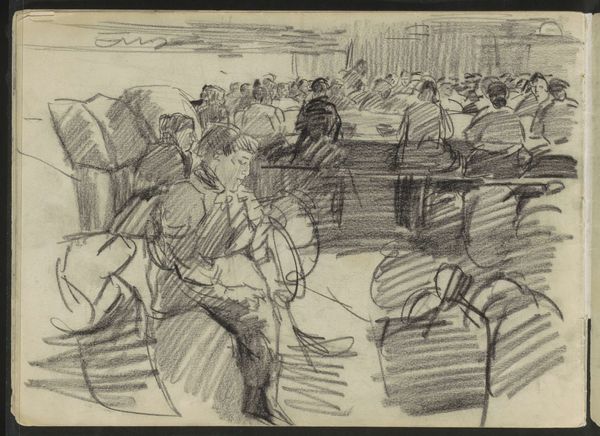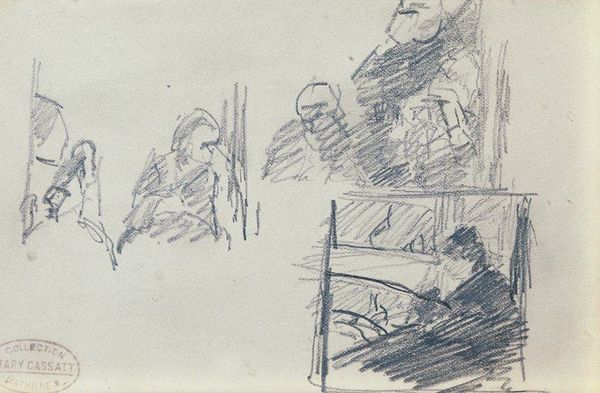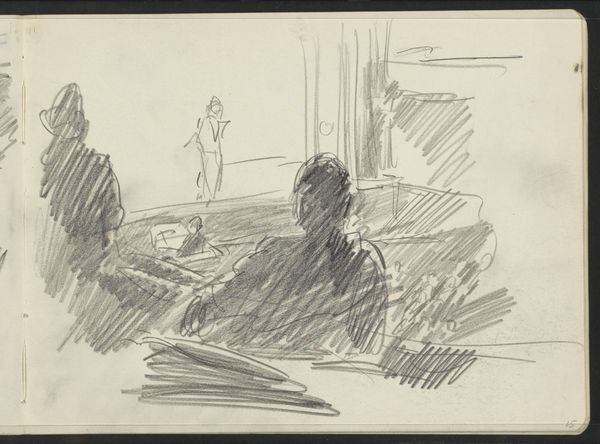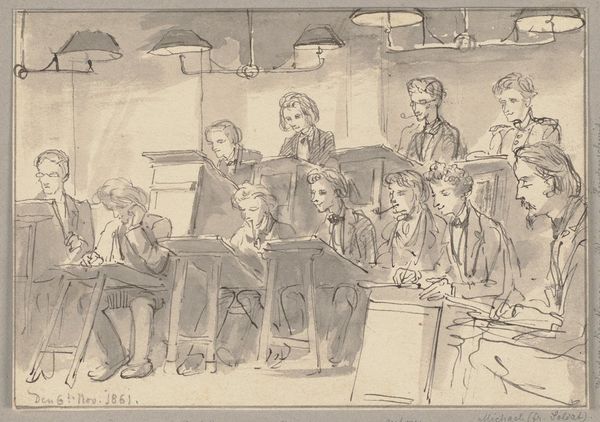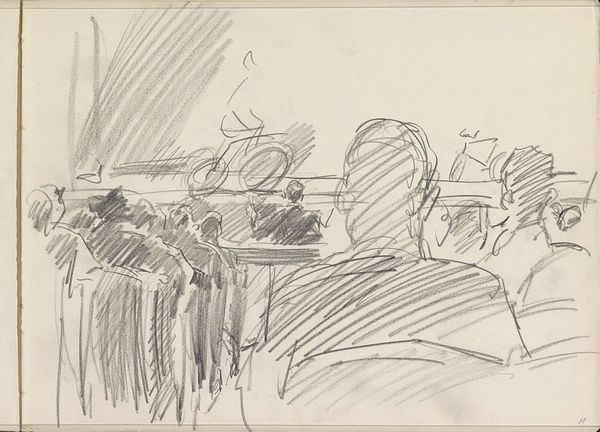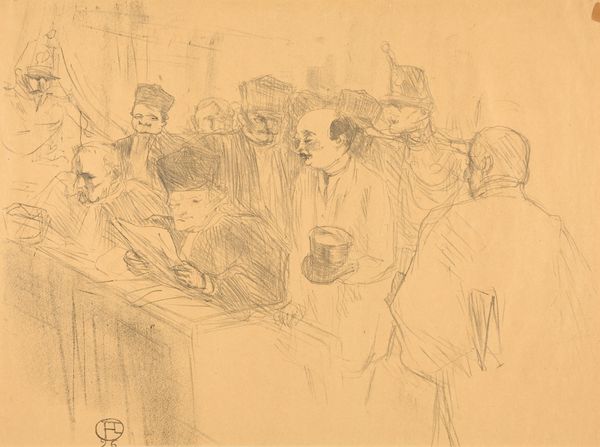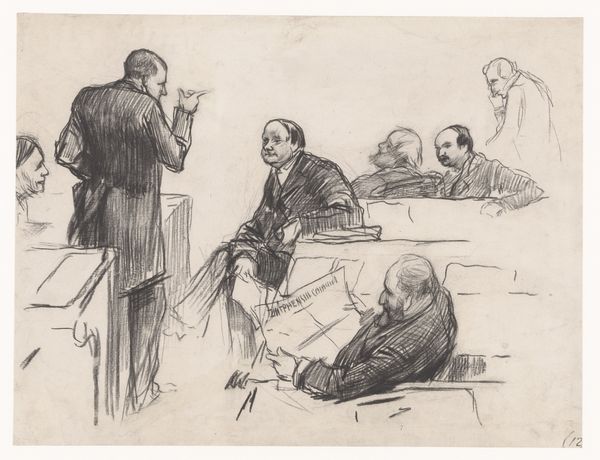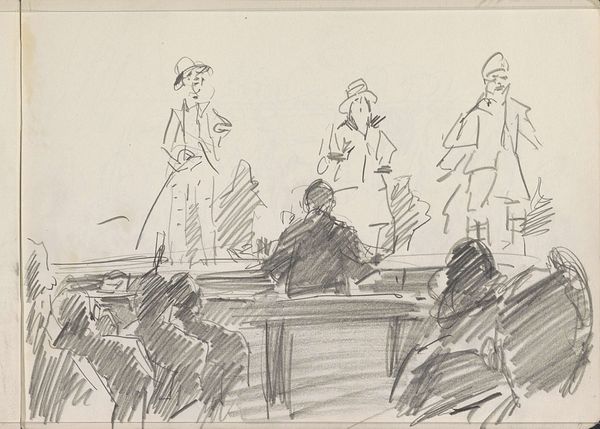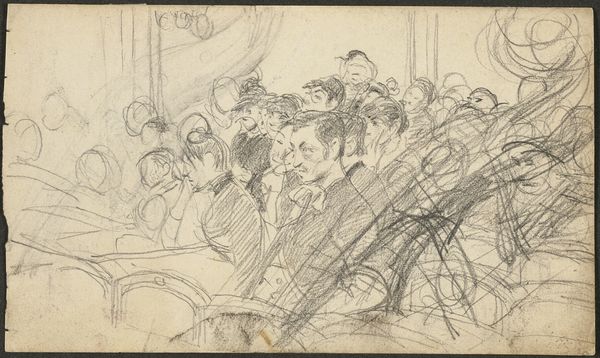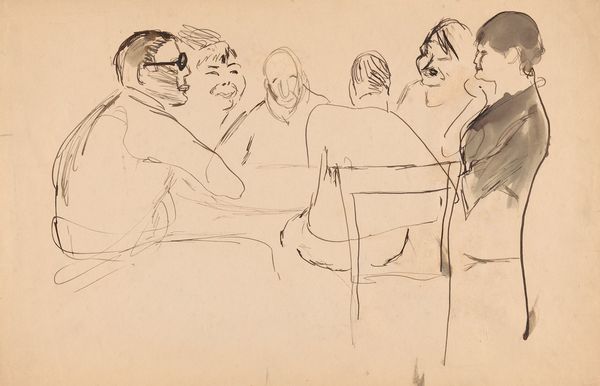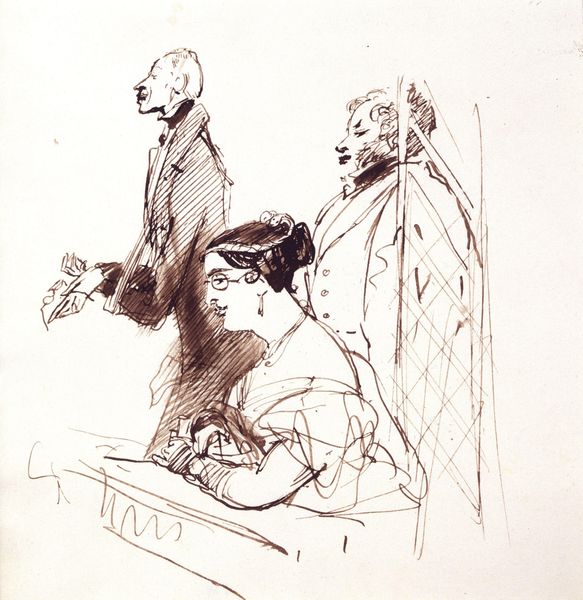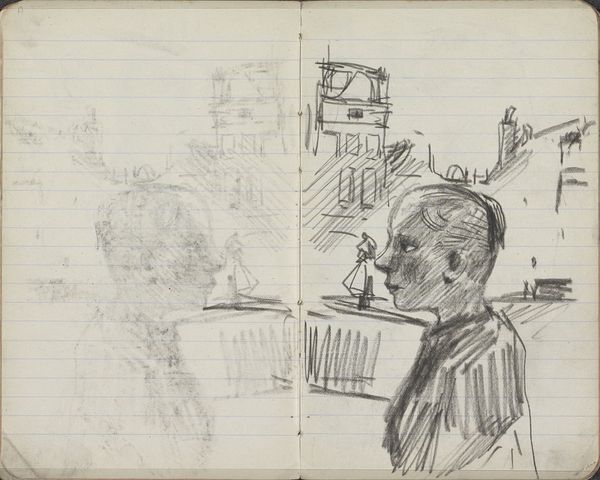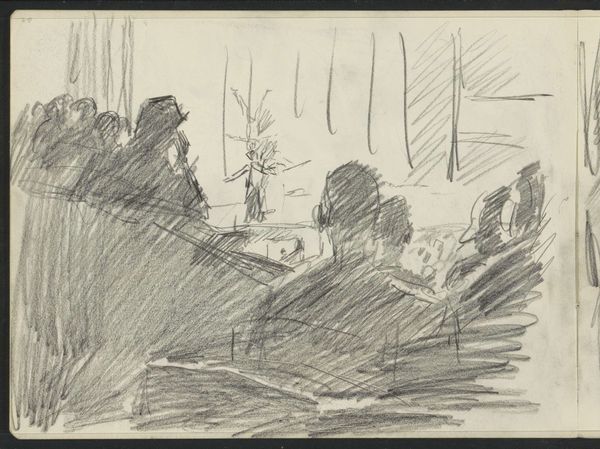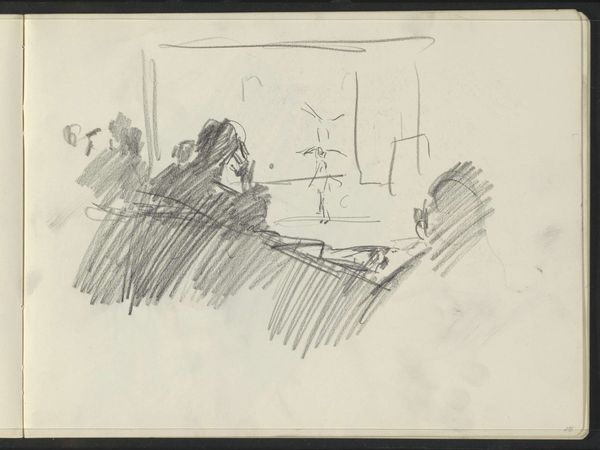
Copyright: Rijks Museum: Open Domain
Isaac Israels made this sketch, 'Koffiepiksters aan het werk' - or 'Coffee Pickers at Work' - with crayon and pencil, probably in the Dutch East Indies. Israels was the son of a famous painter in the Hague school and known for his impressionistic style and interest in everyday life. Here he depicts women sorting coffee beans, likely on a plantation. The sketch gives us a glimpse into the colonial economy of the time. The Dutch East Indies, now Indonesia, was a key source of commodities like coffee, enriching the Netherlands while often exploiting local labor. Israels’ choice to depict these workers is interesting. Does it humanize them, bringing their labor into view? Or does it aestheticize their work, obscuring the realities of colonial exploitation? To understand this artwork fully, we might delve into archival sources about Dutch colonial history, plantation economies, and the lives of Indonesian workers. We would need to know about the institutional histories of the art world at this time, and the kind of patron who might purchase such a work. Art always exists in a specific social and institutional context.
Comments
No comments
Be the first to comment and join the conversation on the ultimate creative platform.
